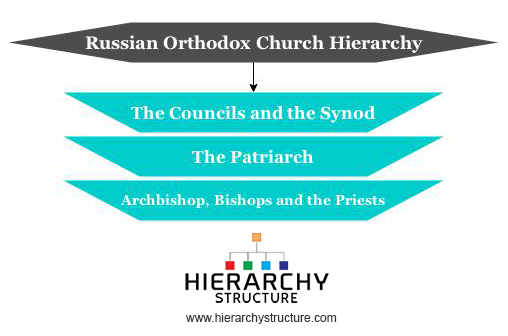For more than 1000 years now, the Russian Orthodox Church has been the foremost religious force in Russia. The hierarchy is akin to the other Orthodox Churches. In ascending order, it’s the patriarch, the archbishops, bishops and priests. This church is followed by the Russian Diaspora, the world over, irrespective of the long years of atheism imposed by the Soviet nations.
Apostle Andrew was believed to be the founder of the Russian Orthodox Church and officially came into existence in 988 when the Byzantine Christianity was adopted by Prince Vladimir. Initially the Church was under the control of the Patriarch of Constantinople and only in 1325 was it permanently moved from Kiev to Moscow. For most part of the Church’s history, the governance kept changing and the latest Patriarch is just the 16th one.
The Hierarchy is as follows:
The Councils and the Synod
The Bishop Council and the Holy Synod are at the top of this hierarchical structure, comprising of the bishops and the other church representatives. Right from electing the Patriarch to canonizing saints and interpreting church teachings, it is the Local Council’s authority and responsibility. When the council is not in session then the Holy Synod headed by the Patriarch of Moscow takes over to handle the matters of the parishes.
The Patriarch
Unlike other Orthodox Patriarchs, the Patriarch of the Russian Orthodox Church is not regarded as perfect and supreme. Just as in the case of Pope of the Roman Catholic Church. In fact akin to the American President he is an elected head but for his entire lifetime. The eligibility criteria are that he should be above 40, be a bishop and be a possessor of supreme quality theological education. The Church should also hold him in high esteem. He does not have any direct canonical jurisdiction outside the Moscow diocese and cannot authorise over matters on faith on an individual basis.
Archbishop, Bishops and the Priests
Just like a diocese of a Western Church, the geographic divisions of the Russian Orthodox Church are known as eparchies. A small eparchy is governed by a single bishop, but a larger one has several of them with an Archbishop heading them. The 130 eparchies of the Russian Orthodox Church re further divided into parishes which are supervised by the priest. Celibacy is not a requirement for these priests, but most of them are.

